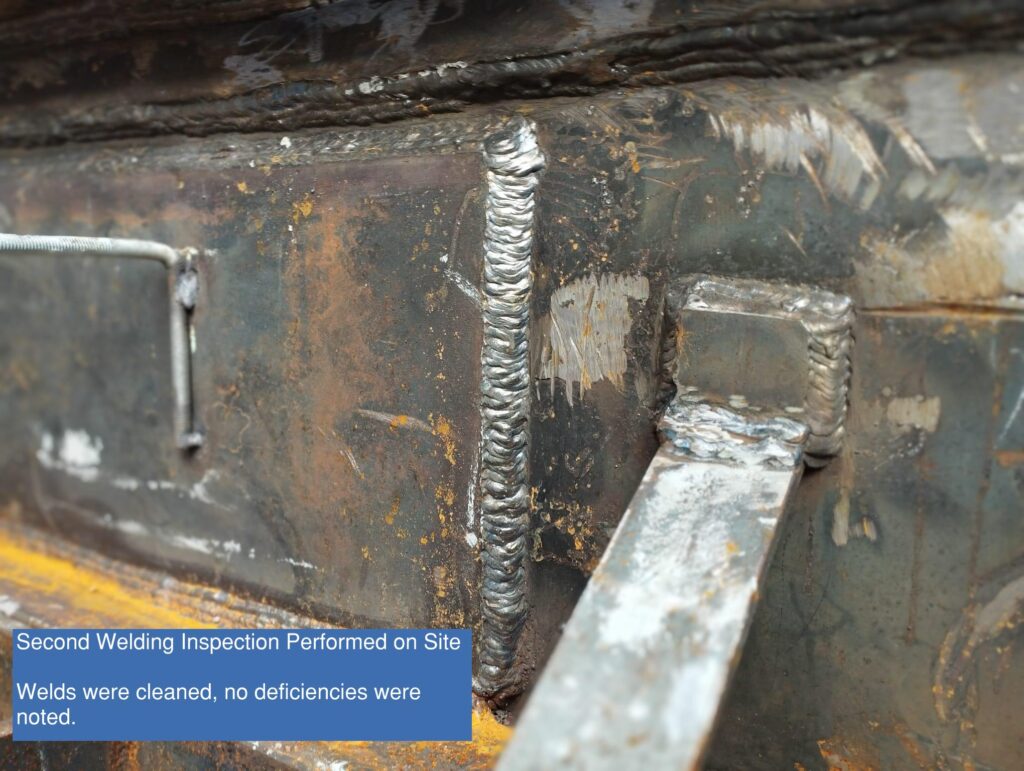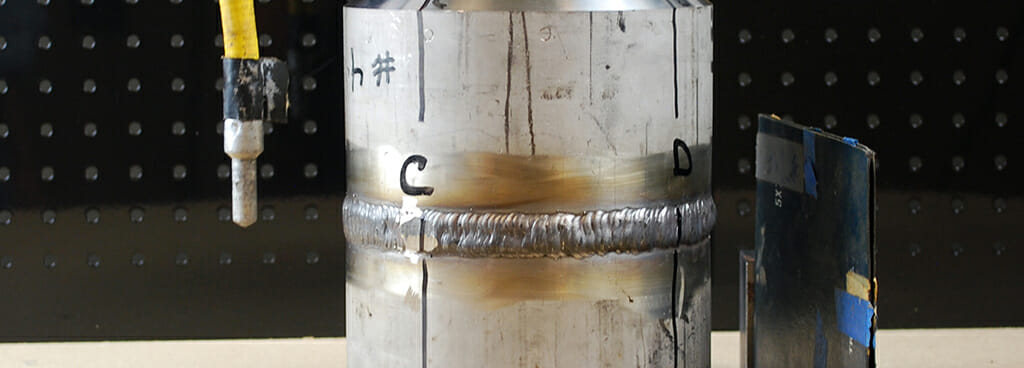The Ultimate Guide to Welding Inspection Racine for Industrial Criteria
The Ultimate Guide to Welding Inspection Racine for Industrial Criteria
Blog Article
Ingenious Approaches to Fillet Weld Examination and Screening: Enhancing Weld Quality and Conformity Requirements
In the realm of welding, the quality and integrity of fillet welds play a vital role in ensuring the structural stability and dependability of numerous commercial parts. With the continuous drive for improved effectiveness and conformity with rigorous criteria, the exploration of ingenious strategies to fillet weld inspection and testing has ended up being imperative.
Advanced Non-Destructive Testing Techniques
Making use of state-of-the-art technologies, progressed non-destructive testing approaches play a vital function in making sure the stability and top quality of fillet welds. These approaches, such as phased variety ultrasonic testing (PAUT) and magnetic bit screening (MPT), offer comprehensive insights into the weld's internal structure without triggering any kind of damages to the material. PAUT, for circumstances, makes use of several ultrasonic components to examine the weld from various angles, supplying a thorough visualization of possible issues like absence of blend or splits.
Likewise, MPT is effective in spotting surface-breaking defects by applying an electromagnetic field and iron particles to the weld location. This approach is especially useful for determining stoppages that might compromise the weld's strength. By employing these innovative non-destructive screening techniques, weld inspectors can precisely assess the top quality of fillet welds, making certain compliance with sector requirements and laws. The capacity to find defects early on not only enhances weld quality but likewise prevents costly rework or failures in architectural stability, highlighting the importance of these cutting-edge testing techniques in welding examinations.
Robotics and Automation in Assessment
The combination of robotics and automation has reinvented the examination process for fillet welds, enhancing performance and precision in quality assessment. Robotics offer exact control and repeatability in checking welds, guaranteeing regular and reputable outcomes. Automated systems can be configured to follow details assessment courses, ensuring comprehensive protection of welds and minimizing the risk of human error.
Robotic assessment systems geared up with innovative sensing units can spot and gauge weld functions with high precision, offering thorough information for analysis. These systems can recognize defects such as splits, absence of combination, and porosity, allowing punctual restorative actions to be taken. Additionally, robotics and automation enable real-time data collection and analysis, giving immediate responses to operators and assisting in fast decision-making procedures.
Furthermore, making use of robotics and automation in fillet weld evaluation improves total productivity by reducing evaluation times and raising examination throughput. By streamlining the evaluation process, manufacturers can make certain weld quality and compliance criteria are satisfied effectively, inevitably causing set you back financial savings and enhanced product quality.
Utilizing Expert System for Evaluation
Man-made intelligence plays a critical duty in improving the effectiveness and accuracy of analysis in fillet weld inspection processes. AI algorithms can rapidly process huge amounts of information from weld assessments, finding flaws or variances that might be testing to recognize with the nude eye - Welding Inspection Racine.
Additionally, AI systems can discover from previous inspection information, continually improving their ability to identify potential defects and discrepancies in fillet welds. This adaptive discovering capacity boosts the total quality assurance process, minimizing the probability of human error and guaranteeing that welds fulfill the called for standards. By integrating expert system right into fillet weld analysis, industries can attain higher levels of effectiveness, uniformity, and conformity in their examination methods.
Portable Tools for On-Site Examination
 Enhancing field evaluation performance, the fostering of mobile tools reinvents on-site analysis procedures for fillet welds. These tools offer versatility and comfort, enabling assessors to perform extensive assessments in numerous places, including remote or difficult atmospheres. Mobile tools such as ultrasonic screening tools, magnetic particle assessment devices, and electronic radiography systems offer real-time information and high-resolution imaging capacities, allowing fast decision-making and instant responses on weld top quality.
Enhancing field evaluation performance, the fostering of mobile tools reinvents on-site analysis procedures for fillet welds. These tools offer versatility and comfort, enabling assessors to perform extensive assessments in numerous places, including remote or difficult atmospheres. Mobile tools such as ultrasonic screening tools, magnetic particle assessment devices, and electronic radiography systems offer real-time information and high-resolution imaging capacities, allowing fast decision-making and instant responses on weld top quality.One significant advantage of portable tools is their ability to enhance examination treatments, decreasing downtime and improving overall productivity. Examiners can easily deliver these tools to different job sites, getting rid of the need for delivering hefty machinery or parts to off-site facilities. Furthermore, the portability of these devices promotes cost-effectiveness by minimizing transportation costs and accelerating examination timelines.
Additionally, the use of mobile tools for on-site assessment promotes proactive quality assurance actions, as examiners can promptly recognize and resolve any kind of possible welding flaws or inconsistencies. By integrating these innovative modern technologies into on-site inspection practices, welding experts can guarantee conformity with industry criteria and boost weld high quality, ultimately resulting in boosted structural honesty and safety in numerous welding applications.
Integration of Information Monitoring Equipment
Having enhanced on-site examination procedures with the usage of mobile tools, the following stage involves the smooth combination of information go now monitoring systems to additionally enhance performance and information evaluation capacities in fillet weld evaluation and screening. Welding Inspection Racine. By incorporating data management systems right into the inspection process, organizations can enhance data collection, storage space, and analysis. This integration permits real-time tracking of weld quality, instant identification of flaws, and punctual decision-making to rectify any issues that may occur during the examination process
The integration of data administration systems allows seamless communication between various stakeholders involved in the examination procedure, fostering partnership and boosting check this general top quality control actions. Ultimately, the assimilation of data monitoring systems serves to boost the requirements of fillet weld examination and testing, making sure conformity with industry guidelines and boosting weld top quality.
Verdict
In conclusion, innovative strategies to fillet weld inspection and screening have substantially boosted weld high quality and conformity standards. Advanced non-destructive screening approaches, robotics, automation, man-made intelligence, mobile devices, and information administration systems have transformed the means weld assessments are performed. By utilizing these modern technologies, markets can guarantee that welds fulfill the needed top quality requirements and guidelines, inevitably enhancing total performance and security in welding processes.

By utilizing these advanced non-destructive screening techniques, weld examiners can accurately assess the top quality of fillet welds, making sure compliance with industry standards and regulations. Portable devices such as ultrasonic testing gadgets, magnetic bit assessment equipment, and electronic radiography systems give real-time information and high-resolution imaging capacities, making it possible for quick decision-making and immediate feedback on weld high quality.
Having optimized on-site examination procedures through the utilization of portable devices, the next stage includes the seamless integration of information monitoring systems to better boost efficiency and data analysis capacities in fillet weld inspection and Clicking Here screening (Welding Inspection Racine). Eventually, the integration of information management systems serves to raise the standards of fillet weld examination and testing, guaranteeing compliance with sector regulations and boosting weld high quality
 In conclusion, innovative strategies to fillet weld examination and screening have dramatically boosted weld high quality and conformity criteria.
In conclusion, innovative strategies to fillet weld examination and screening have dramatically boosted weld high quality and conformity criteria.Report this page